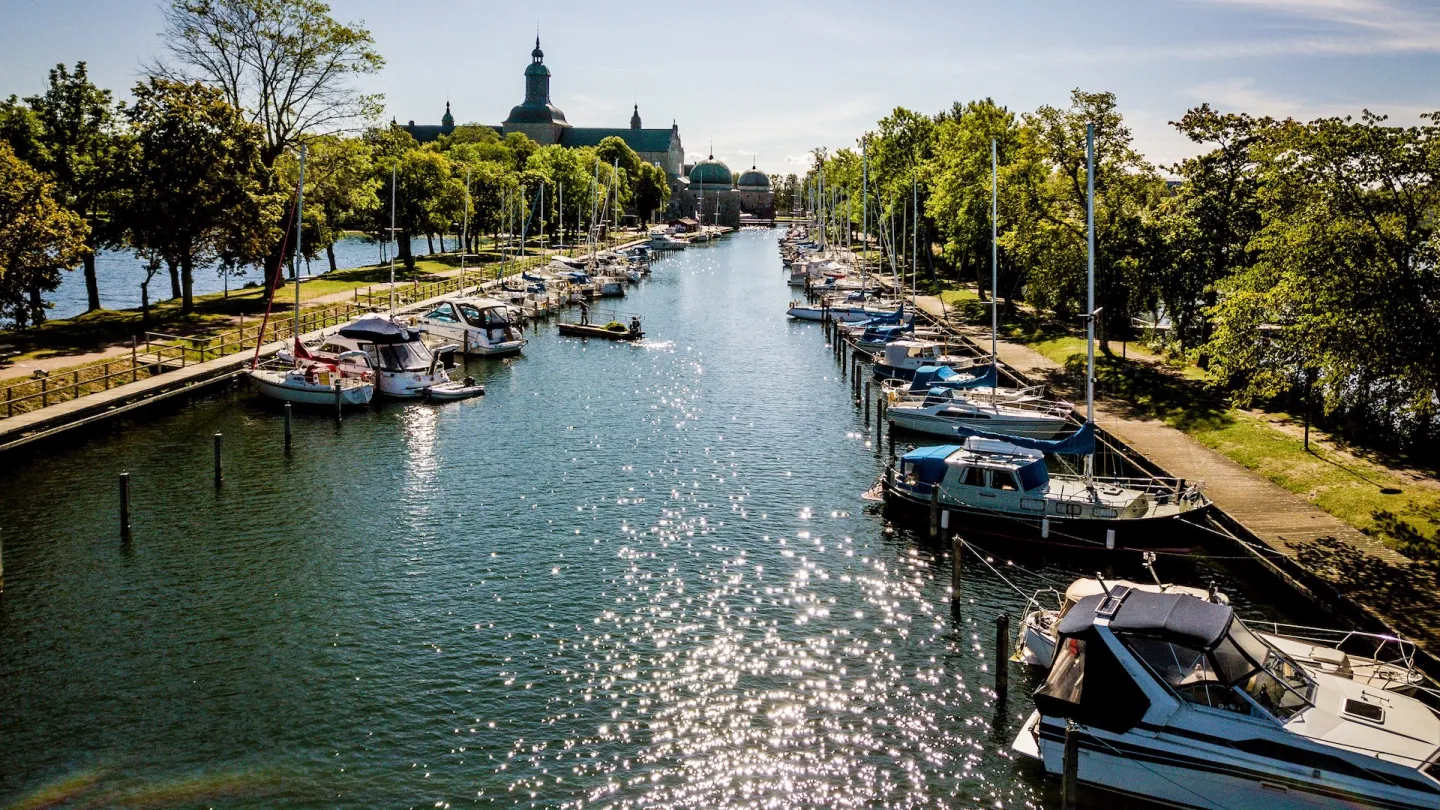An excursion tip!
Vadstena is not far from the Göta Canal
Words cannot convey the aura of history that pervades throughout Vadstena. Though nebulous it is almost tangible. It has to be experienced. Abundant evidence of this takes the form of the many remarkably well preserved medieval buildings in which one can almost step back in time. Not least among Vadstena’s other attractions is its immediate proximity to Lake Vattern which affords beaches and aquatic activities.
A key factor in maintaining not only an atmosphere of peace and tranquillity, but also generating the energy and movement in Vadstena, is the pride and sense of custodianship that the residents have in the place that creates it. A place that for centuries people have turned to for recreation and inspiration.
Vadstena has always been a place to marvel at, visit, return to, enjoy and stay in.
The medieval town of Vadstena resonates with reminders of its past, encompassing historic events of both clerical and secular significance. The town centre still follows its medieval plan and many of the historic buildings are very well maintained. Two people are responsible for the famous skyline: King Gustav Vasa, who built the Vadstena Castle, recognized as the best preserved Renaissance castle in Scandinavia, and St. Birgitta, responsible for the construction of the monastery area.
Vadstena is not directly on the Göta Canal. But with its fantastic location at Vättern south of Motala, the picturesque medieval town is well worth a detour for all canal visitors!
Marina
Vadstena marina is wonderfully situated on the best-preserved Renaissance castle and you are well protected during these most weather conditions. Mooring by buoy or the quay and during high season also at the sailing club or boat club's vacant permanent berths.
Motorhome space
The Motorhome space is located across the moat of the marina, in other words, just as beautifull as the marina itself. Here, you stand with your motor home in an area with direct access to the lake. On Wednesday nights throughout the summer, starting at the end of May, surrounded by scenic motorized vehicles and a lot of people, which is namely the city nostalgia evenings held.
Vadstena shares a long history with the Göta Canal
Even before the Göta Canal was built, the expectations of the population and business community in Vadstena were high. Outside the large trading houses in Stockholm and Gothenburg, there was nowhere along the canal the interest in shares greater than in the surroundings of Vadstena.
Gustav Vasa's massive castle in Vadstena was completed in 1620, but left to decay for several hundred years. During this time the castle was used as a grain and brandy warehouse.
With the construction of a harbour in Vadstena, the castle's warehouses were connected to the canal traffic. It was not until the end of the 19th century that the castle of Vadstena was restored and the grain and spirits storehouses turned into archive rooms. Now the Regional Archives are housed in the castle and preserves large parts of the history of the Göta Canal.
The construction of the Göta Canal created Borghamn
South of Vadstena, at the foot of the Omberg mountain, lies Borghamn, whose quarry flourished in the 19th century with the construction of the Göta Canal (1810-1824).
At the beginning of the 19th century, the Borghamn limestone quarry was acquired by Baltzar Von Platen at the expense of the canal construction. The port of Borghamn was built in 1810 to transport the stones to Motala. For each of the 58 locks, 400 m2 of limestone was delivered to Motala by barges. Some of the ships have sunk and can be seen through the clear water of Lake Vättern deep down at the bottom, when one skates over the transparent ice in winter with cross-country skates.
